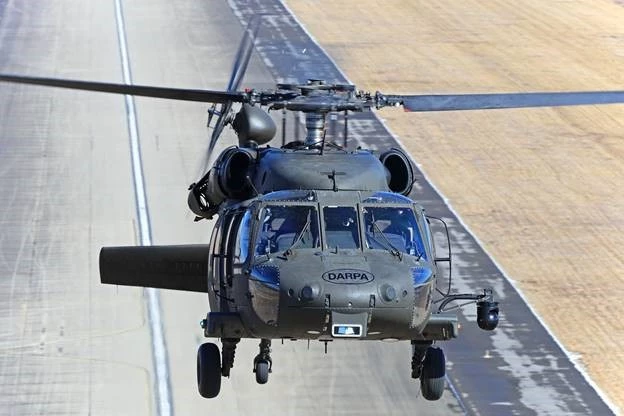DARPA's Aircrew Labor In-Cockpit Automation System (ALIAS) program has taken another step forward, with a US Army UH-60A Black Hawk helicopter taking to the air over Fort Campbell, Kentucky on February 5 for a 30-minute autonomous flight with no one aboard.
Last week's flight, which was followed by a second 10-minute flight on February 7, was not the first for ALIAS, nor was it the first with the system installed in a Sikorsky Black Hawk, but it is the most ambitious to date. It was the first flight with no one inside such a complex aircraft that was under control of the retrofitted Sikorsky MATRIX autonomy technology, which is the key component of ALIAS responsible for converting a conventional aircraft into an optionally piloted vehicle (OPV).
The recent flight seemed to be relatively simple, with the helicopter carrying out a series of pedal maneuvers as it navigated a virtual obstacle course over the airfield. But behind the scenes the drop-in, removable ALIAS demonstrated how close we are to fully autonomous flight today.
Where most autonomous systems carry out simple tasks and act as assistants to a human pilot who still has to deal with complex interfaces and unexpected situations, ALIAS turned the Black Hawk into a completely automated aircraft, taking over key pre-flight procedures, including power, secondary control, wind checks, and elements of adaptive flying like take off and landing. Had an emergency occurred, such as a loss of power, the system would have sought out an appropriate landing spot and touched down even if both engines had failed.

During the demo flight, the Black Hawk was supervised by a human pilot at a ground station. This illustrates a change in the relationship between humans and computers. Where autonomous systems have evolved into digital co-pilots that assist the human pilot, the next step is for systems like ALIAS to be the digital pilot and the human the mission commander who tells the system what to do rather than directly controlling the aircraft.
"With reduced workloads pilots can focus on mission management instead of the mechanics,” said Stuart Young, program manager in DARPA’s Tactical Technology Office. “This unique combination of autonomy software and hardware will make flying both smarter and safer.
"With ALIAS, the Army will have much more operational flexibility. This includes the ability to operate aircraft at all times of the day or night, with and without pilots, and in a variety of difficult conditions, such as contested, congested, and degraded visual environments."
The video below recaps the recent crewless autonomous flight.
Source: DARPA





